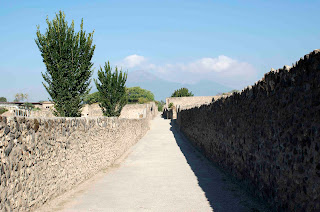 |
| The Erechtheum, atop the Acropolis. |
Athens, Greece - Antiquity's smooth white marble contrasts with the colourful, organized splatters of spray paint. Ancient columns shrug behind cages of steel scaffolding.
The old and the new: everywhere.
There seems to be a tension in Athens between holding on to the city's impressive history, and moving on. Having the country's economy crumble like so many of the buildings we have come to visit has, of course, not helped.
Nor has having more history than most cities could dream of.
Tension was at the forefront again today, as Athenians used the occasion of German Chancellor Angela Merkel's unplanned visit to strike and to protest. Police sat skittishly astride motorcycles, but this has become an all-too-common practice in the city. Ho hum.
Yet, roars from the gathered crowd could be heard atop the Acropolis. Bandana-clad protestors chipped marble from ancient structures and both literally and metaphorically threw history at the police.
We had changed our itinerary to be away from downtown by noon, when the larger protests had been planned.
Instead, we stopped briefly at the site of the first modern Olympic Games, the
Panathenaic Stadium (which our guide told us, "hosts a marathon every year with amateurs
–
not
real athletes." Um, wow.), before climbing the
Acropolis, which overlooks the city.
As with the Olympic Stadium, all of the buildings up the steep hill
–
including its most famous resident, the
Parthenon
–
are made entirely of marble. They stand now like chipped smiles, missing columns and leaving their former splendour to your imagination. But, they are still as beautiful as they are impressive.
Standing there, history became very, very real.
While I was not, for the most part, overly thrilled by Athens, how many other cities can boast of having clusters of ancient ruins trod upon by the likes of Aristotle, Socrates and Plato sprouting from their core?
Unfortunately, the city of philosophers now seems filled with too many who are content to express their thoughts through violent strikes and spray paint cans, rather than truly help move the country forward.

















